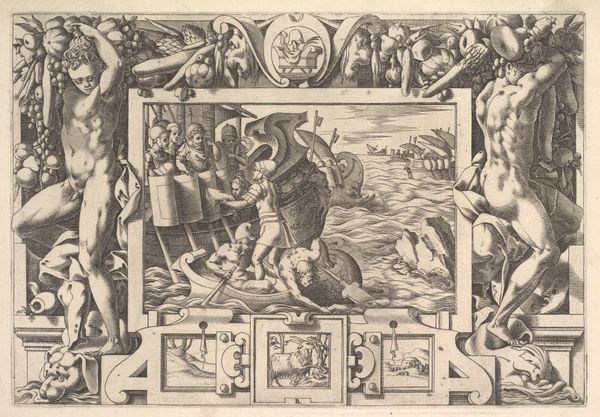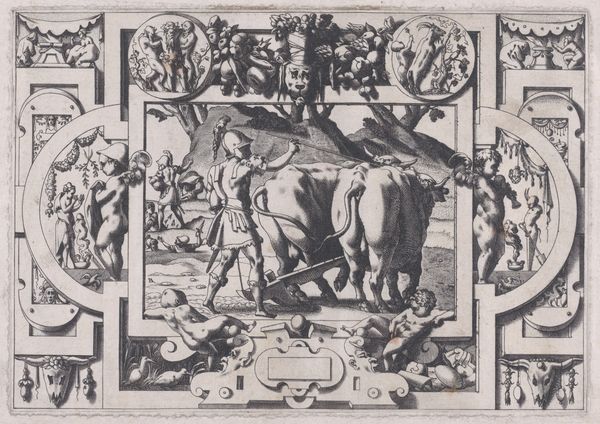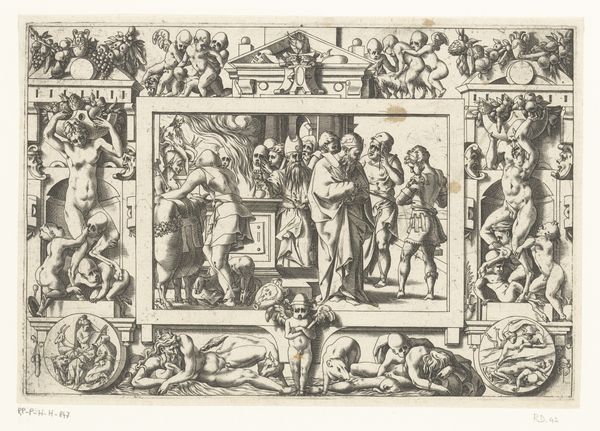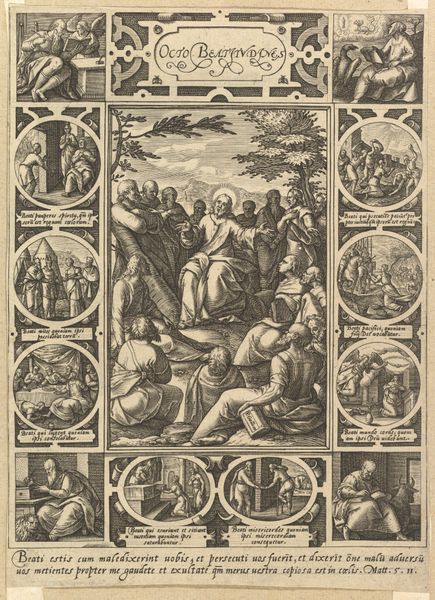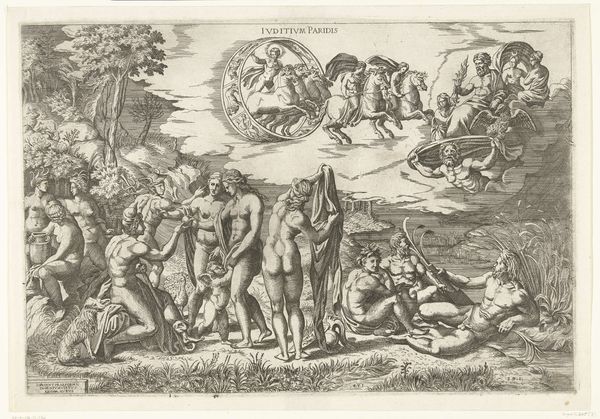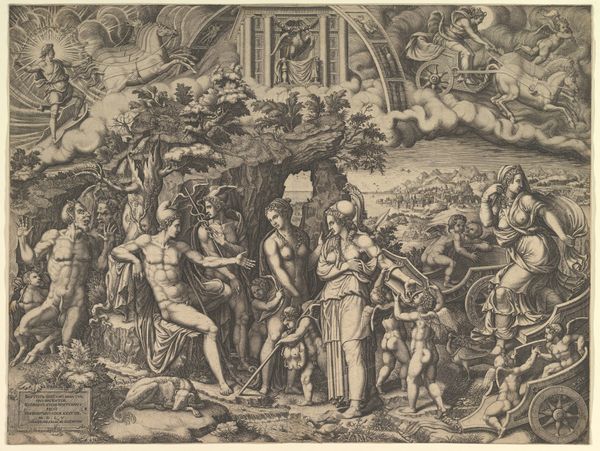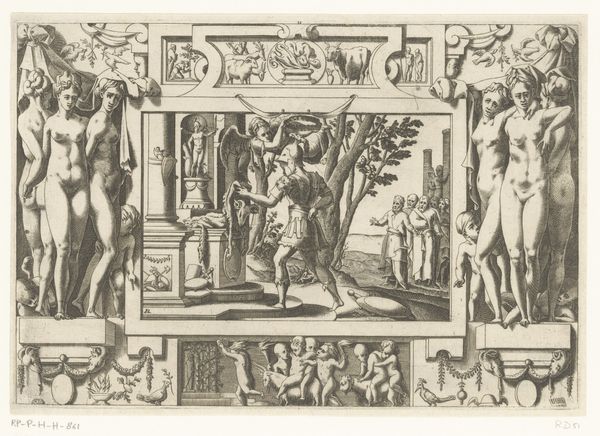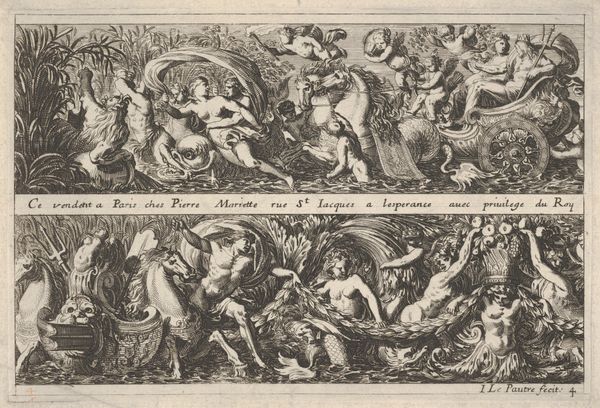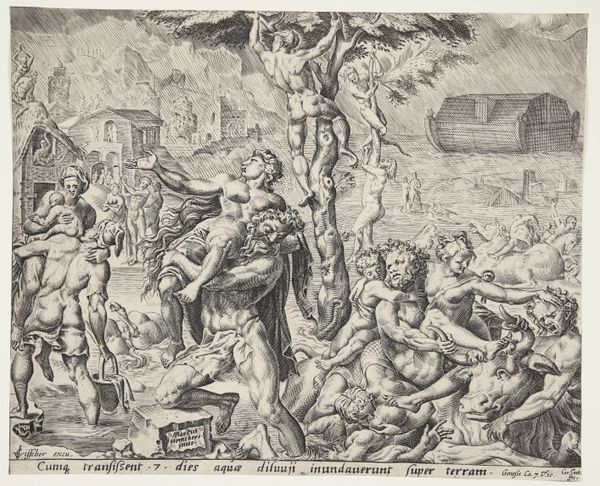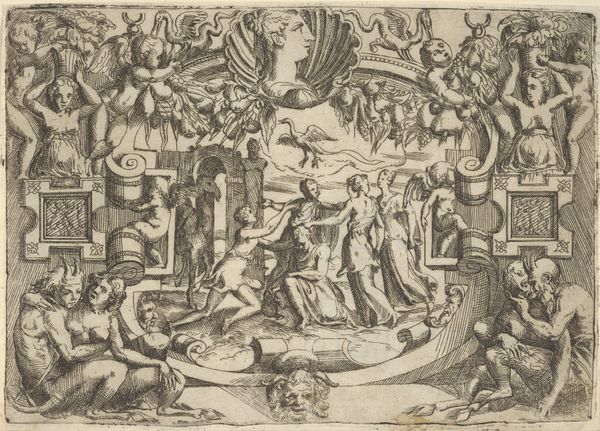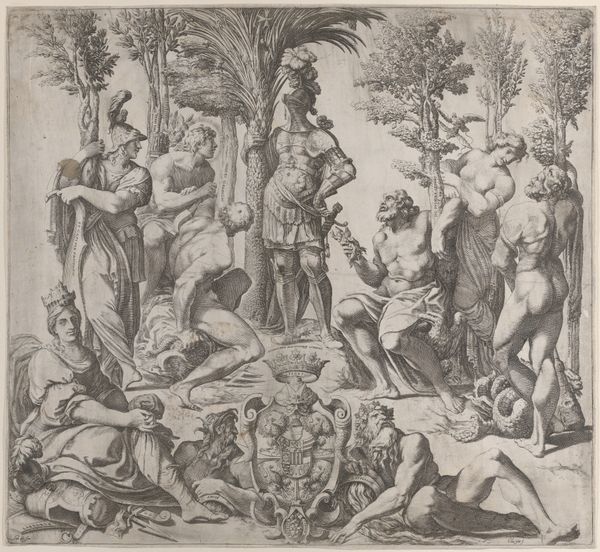
Jason Confronts the Dragon Guarding the Golden Fleece (Par tels assauts Jason va travaillant le fier dragon de nuit et jour veillant...), from "Jason and the Golden Fleece" 1563
0:00
0:00
drawing, print, engraving
#
drawing
# print
#
figuration
#
11_renaissance
#
history-painting
#
engraving
Dimensions: Plate: 6 1/8 x 9 in. (15.5 x 22.8 cm) Sheet: 6 1/4 x 9 1/8 in. (15.8 x 23.2 cm)
Copyright: Public Domain
Editor: This is "Jason Confronts the Dragon Guarding the Golden Fleece," a 1563 engraving by René Boyvin. It looks incredibly intricate; the detail in the border is astonishing, contrasting quite sharply with the drama of Jason and the dragon at the center. How should we interpret this piece from a structural point of view? Curator: Let's examine how Boyvin manipulates line and space. Note the clear delineation between the central scene and the elaborate border, the former depicting action, the latter a more static, symbolic realm. The use of contrasting textures – the smooth skin of the figures versus the scaled dragon – adds another layer of complexity. Consider the spatial arrangement; is Jason really that much taller than the dragon? Editor: That’s an interesting point. The scaling *is* off. He looks a little too big, even heroic... Is it intended to draw attention to Jason's triumph and overall figure rather than accurate representation of the events as depicted in the original mythology? Curator: Precisely! Also, observe the composition's use of implied lines to guide the viewer's eye. The thrust of Jason's sword, mirrored perhaps in the distant treeline? Ask yourself, how do such choices shape our experience of the artwork's narrative? Note too how Renaissance ornamentation, grotesques, and mythological figures are cleverly combined. The structure and form underscore a message. Do you discern such a message? Editor: I see... It's less about the literal story and more about how Boyvin visually conveys the concepts of heroism and the triumph of reason through symbolic design. So, by looking at just composition and form, we can decode meaning. Curator: Exactly! The relationship between these structural components creates meaning and impacts our interpretation. Each element works together, directing our experience of Jason's story. Editor: That's so helpful to know, it encourages close and varied observation. It gives us a richer way to see.
Comments
No comments
Be the first to comment and join the conversation on the ultimate creative platform.
